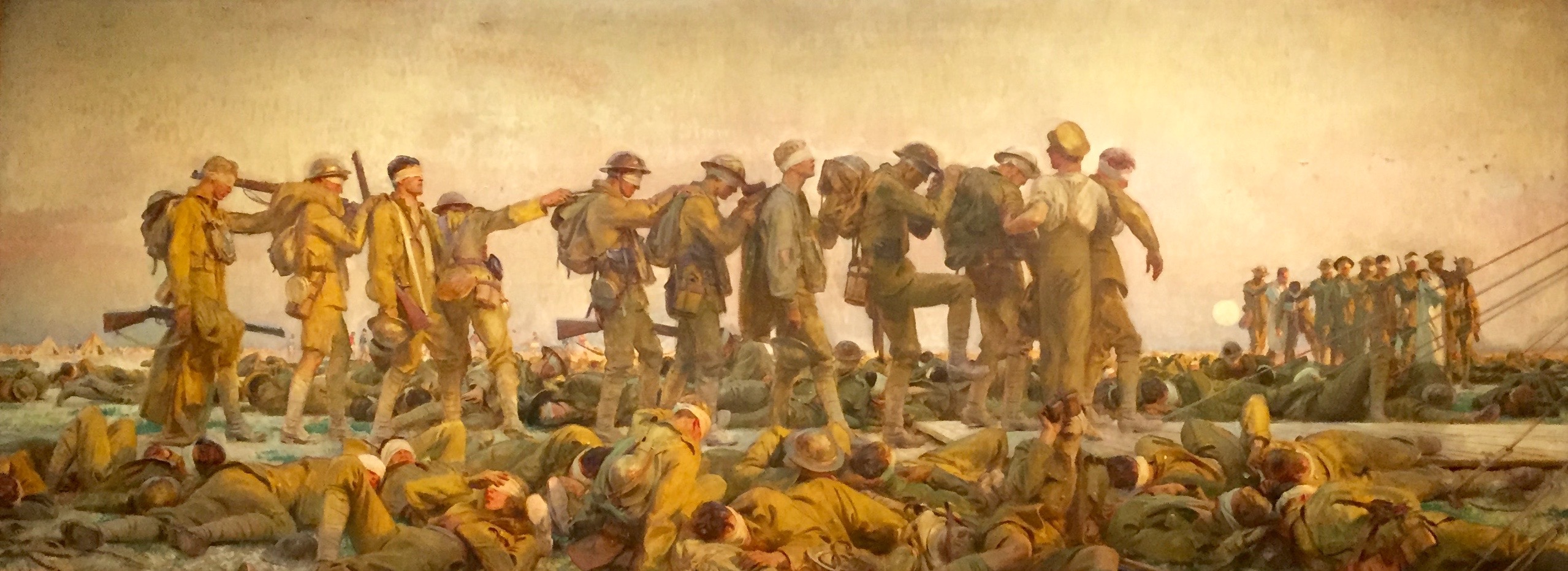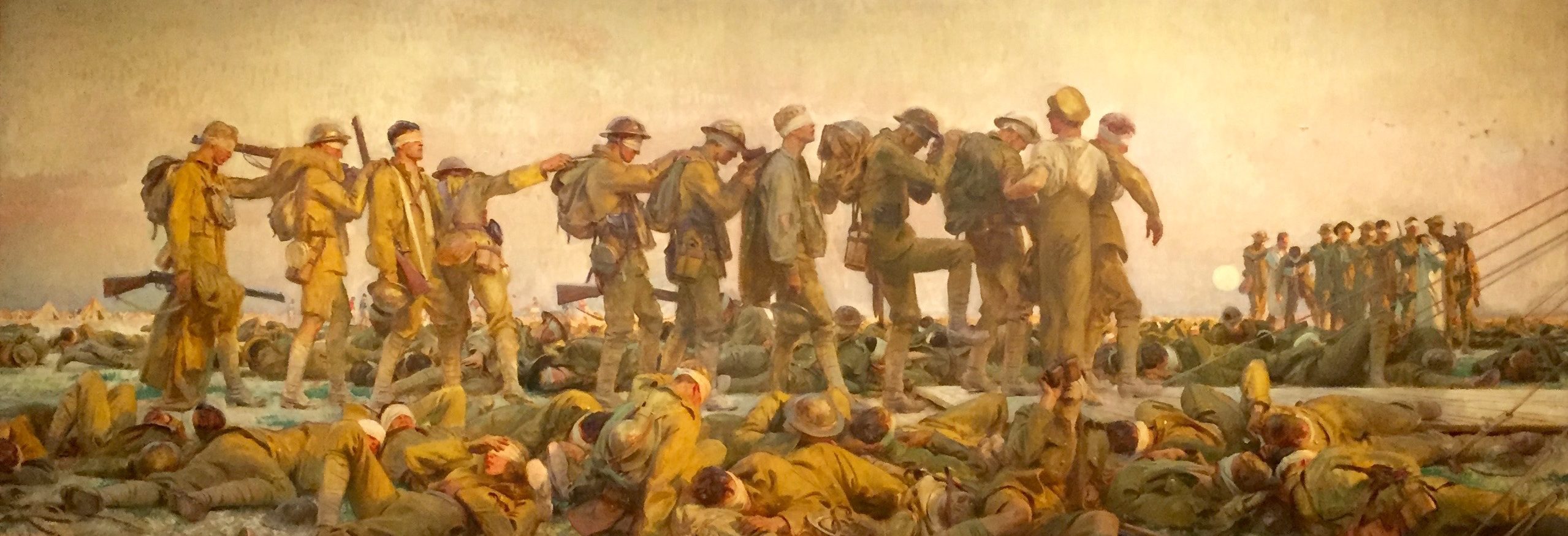About suffering they were never wrong,
The old Masters: how well they understood
Its human position: how it takes place
While someone else is eating or opening a window or just walking dully along; – — — W.H.Auden
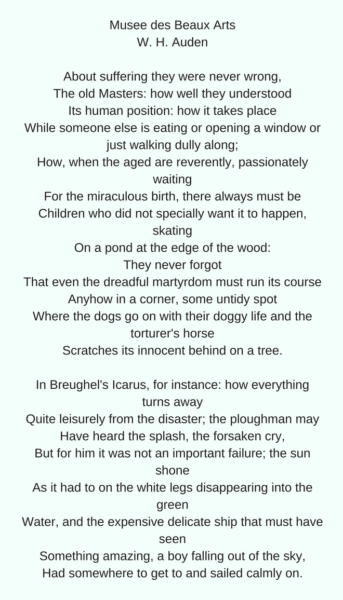 Gassed is an enormous – over 20 feet long – painting by John Singer Sargent normally on view at the Imperial War Museum in London.
Gassed is an enormous – over 20 feet long – painting by John Singer Sargent normally on view at the Imperial War Museum in London.
Today it’s the centerpiece of a stupendous exhibit: World War 1 and American Art at The Pennsylvania Academy of Fine Arts.
The exhibit is dedicated to exploring the ways in which American artists reacted to the First World War and it’s fascinating. If you are anywhere near Philadelphia go and see it.
In August 1918, Sargent and Henry Tonks – the British surgeon and official war artist – both witnessed a field of wounded men near Le Bac du Sud, Doullens that became the basis for Gassed. In a letter Henry Tonks described how it happened:
After tea we heard that on the Doullens Road at the Corps dressing station at le Bac-du-sud there were a good many gassed cases, so we went there. The dressing station was situated on the road and consisted of a number of huts and a few tents. Gassed cases kept coming in, lead along in parties of about six just as Sargent has depicted them, by an orderly. They sat or lay down on the grass, there must have been several hundred, evidently suffering a great deal, chiefly I fancy from their eyes which were covered up by a piece of lint… Sargent was very struck by the scene and immediately made a lot of notes. It was a very fine evening and the sun toward setting.
Sargent called this field of gassed and blinded men a “harrowing sight”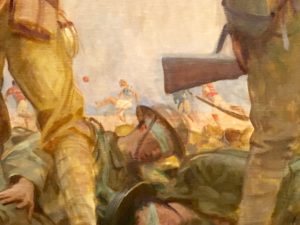 .
.
Look at this background detail from the left hand side. Behind the line of men being led to the dressing station there’s a line of bell tents and a game of football – men in shorts and colored jerseys.
In Auden’s poem he references Breugel’s Icarus where in the distance a boy falls from the sky but the ploughman keeps on working.
The exhibition card expresses it this way;
Life goes on in the midst of suffering. Gassed poignantly reflects Sargent’s view that war creates moral blindness on a massive scale, with soldiers and civilians alike following their leaders into chaos, darkness and oblivion.
Many have found Sargent’s painting Gassed too soft on the crime of war – a tableaux that rather glamorizes war, sanitizes and blunts the harsh edge of suffering, bathing it in a sunset glow. E.M. Forster was a notable critic as was Virginia Woolf.
Sargent had, after all, been commissioned by the British Ministry of Information. It wanted a large-scale work for a planned Hall of Remembrance commemorating Anglo-American cooperation. Sargent found it hard to find a suitable scene. The line of men wounded in a mustard gas attack being led toward the casualty tent is what he chose.
It terms of that choice he wrote: “The further forward one goes the more scattered and meagre everything is. The nearer to danger, the fewer and more hidden the men – the more dramatic the situation the more it becomes and empty landscape. The Ministry of Information expects an epic – and how can one do an epic without masses of men?”
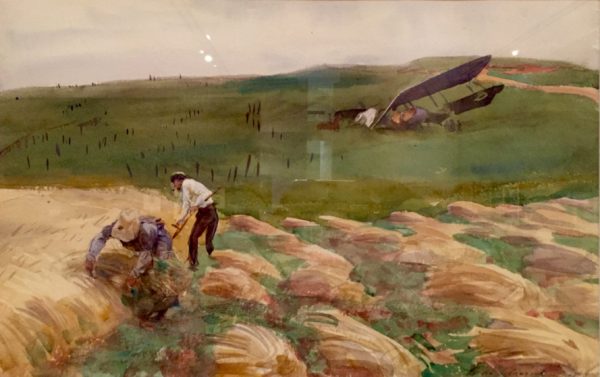
In Sargents’s watercolor Crashed Airplane 1918 the harvest must go on.
